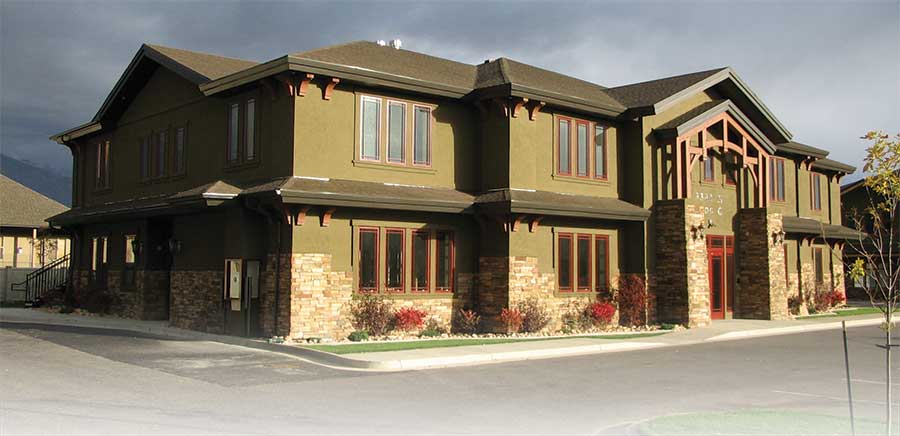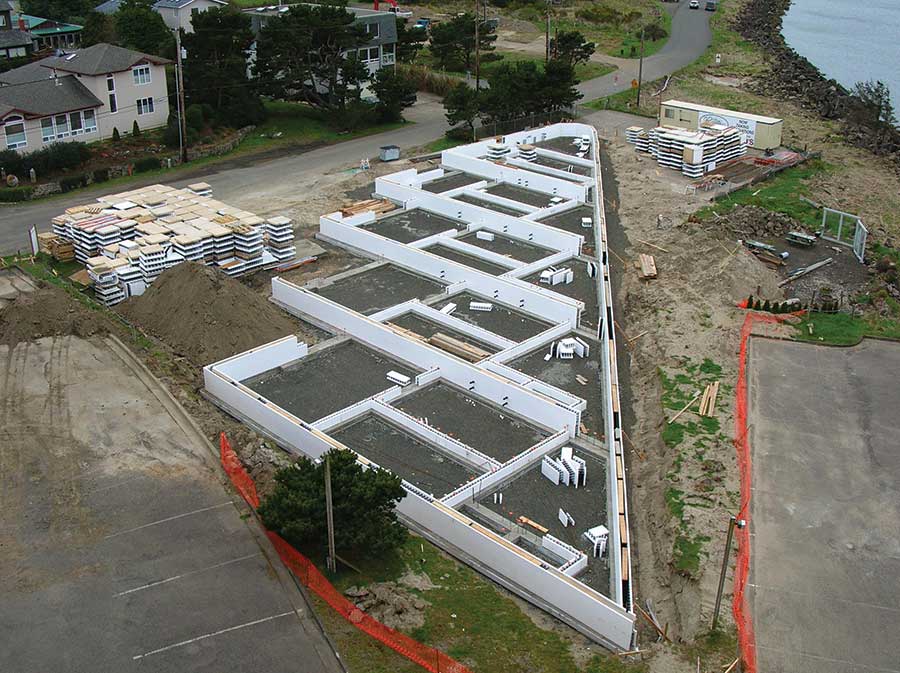by Randy Wilkerson
The economy has taken a turn for the worse, and the face of the construction industry will likely never again look the way it did through the ‘90s and early 2000s.
The single family housing market is one of the driving forces in our national economy but with the sub-prime credit crisis, ever increasing fuel cost, shrinking employment and the recent Federal Government takeover of the nation’s two largest lending agencies, Fannie Mae and Freddie Mac, it appears that there is a darkening cloud over the entire construction industry.
However, the commercial construction and multifamily housing markets look promising in the year ahead. There are tremendous rewards to be gained, but you must to be sufficiently prepared to enter this market and reap the rewards.
Here are some of the differences you must be prepared for when you make the leap from residential ICF construction to the larger and more time-sensitive commercial construction.
Plan Ahead
Some of the issues will require you to review and plan for before making the leap. There are tremendous differences in simple items such as language, contract terminology, pay schedules and information flow. And as the saying goes, you are only as strong as your weakest link. One weak link and you could find yourself swimming in the pond trying to avoid the credit sharks like so many others at the present.
The first decision is whether you want to grow your ICF business beyond residential basements and above grade walls, or if the current volume will sustain your expectations.
If the answer is to grow your ICF business, then you will need to redefine your business in terms of how you market yourself. And you’ll have to determine how you produce the work once you’ve been awarded a commercial contract.
Perhaps one of the easiest ways to begin the process is to evaluate your existing leads and reference network to see if there are opportunities lurking with current customers or those you’ve done business with in the past.
Learn to network and take advantage of opportunities in your community, civic organizations, and church. Get involved with the people who are building, designing and developing the commercial sector.
Seek out national organizations that are involved in Green Building, or that are associated with business sectors ICFs
are particularly well suited for, such as theatres, schools, temperature-controlled storage facilities, military facilities and municipal buildings.
Other markets that have shown significant interest in ICFs include retail big box stores and the hospitality industry. This sector can include restaurants, hotels, resort properties and private clubs. More than likely, someone you already know is currently involved in one of these industries and just might be planning a new facility at this very moment. If they are not involved in a project right now, don’t be afraid to ask for a referral for someone that may have a project in the works.
Redefine the Business
In redefining your business, ask the questions “who are we” and “what exactly do we do?” This will help you understand your strengths and weaknesses. It will also help determine what you expect from your business.
Then define who your immediate competition is, and who your long term potential competition may be as you change the focus of your business. While studying the competition be sure to compare your strengths and weaknesses to your competition’s strengths and weaknesses.
Learn the Language
Commercial construction has its own language. Learn it. It’s pretty embarrassing to meet a potential client and call him the customer; in the commercial business the “customer” becomes the “owner” for contractual purposes. The “builder” is now the “contractor” or the “GC”.
Plans, specifications and subcontracts are now called construction documents or CD’s. Legal pad bills now become “Applications for Payment” supported by a schedule of values detail verification. You no longer call up the builder and ask how high the wall should be or what the steel layout pattern should be. You must submit a Request for Information (RFI) or Request for Clarification (RFC). The contractor will submit it to the architect or engineer and then to the owner etc.
Thus the information flow becomes a necessity in terms of a paper trail for who said what and why.
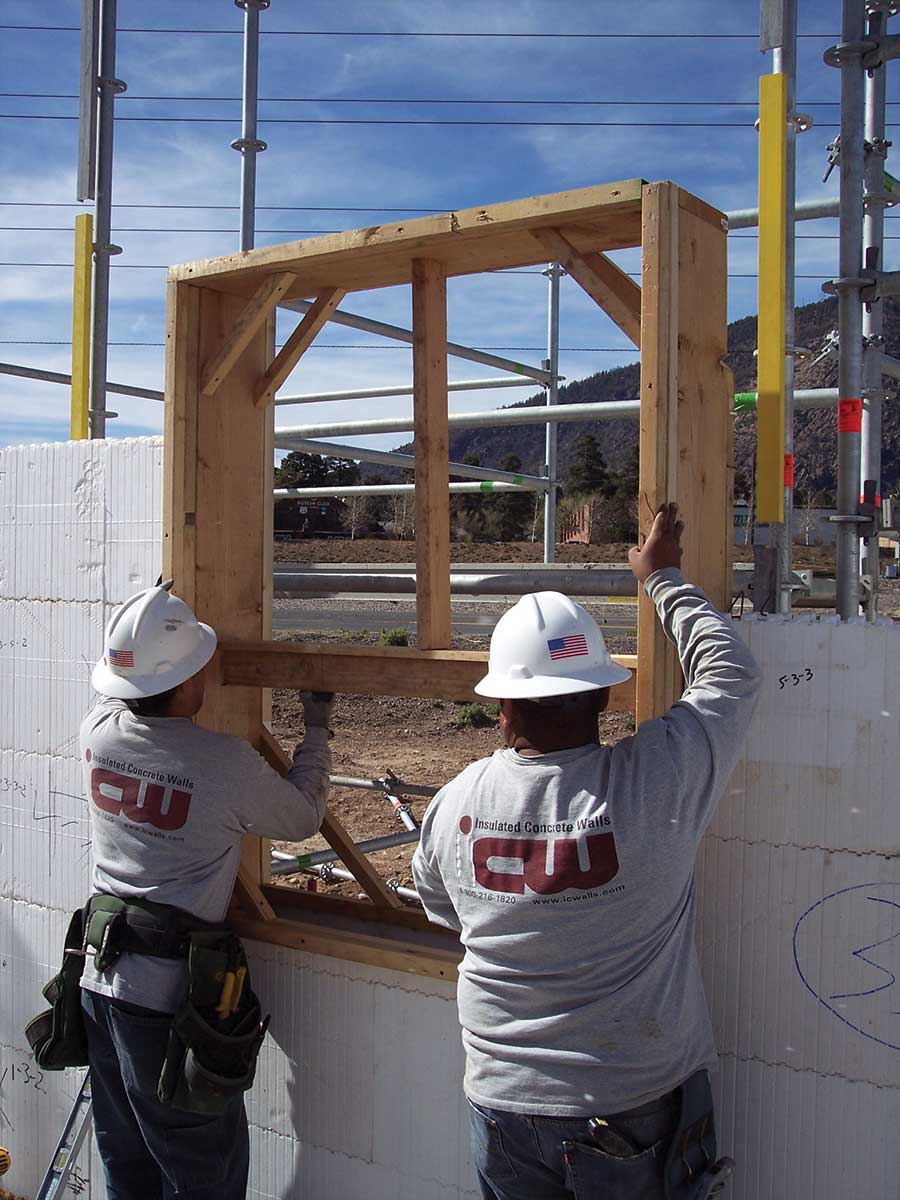
Maintain a professional image on the jobsite and in all your communications. Insulated Concrete Walls has set the standard with logo uniforms and jobsite trailers.
Diversify Your Services
One way to increase your opportunities in the commercial market is to diversify your product line or services. You may want to add waterproofing, since every foundation and practically every commercial building has some type of waterproofing or dampproofing system (see story on page 40 for details). It might be that increasing you scope of work could give you a competitive edge over your competition because he offers only one product or service.
If you can waterproof the foundation after you pour it, can you do it a little bit cheaper since you are already mobilized to the site? Look at other phases (or divisions) of work that are directly impacted or supported by your current product line.
You don’t necessarily have to add additional equipment and capital expenses to increase the coverage of scope. Maybe you know an excavating subcontractor that you’ve worked around for years and you know he does a good job. See if he would like to partner with you and offer a more comprehensive package. I know that as a GC, I would rather deal with as few sub-trades as possible. It reduces my paper work and the office expense of processing multiple checks etc. This type of relationship is a win/win for both of you. Every time one of you gets a lead both of you can work it. I bet that your closure rate would increase dramatically by doing this. It may also allow you to have a better quality footing.
Another service or phase that you can add is slab-on-grade. There’s always a flatwork subcontractor looking for work. This arrangement would allow you to reduce the overall project cycle time by reducing the number of move-ins (mobilizations) on a site that would need to take place under single source contracts. This helps the contractor meet his schedule while at the same time shaving his budget.
Professionalize Image
One of the biggest mistakes residential contractors and subcontractors make when making the jump to commercial construction is the image they project. You must maintain organization at all cost. When you enter the commercial ICF market, the days of the “dashboard file cabinet” are over.
Establish an office. Even if it’s a single room in a Key Man suite or Executive Suite building somewhere, find a place where you can conduct business meetings. There are a wide range of options in today’s commercial properties. There are key man spaces as previously mentioned, where you can have basically a room with a desk. There are executive suite facilities that provide telephone services, secretarial services, conference facilities and now there are actually facilities that provide equipment and hookup services for teleconferencing or video conferencing.
Find somewhere and change your image. If you’re going to grow and build confidence in an Owner who is going to spend several million dollars on a new facility, he wants to be assured that the company he deals with is professional.
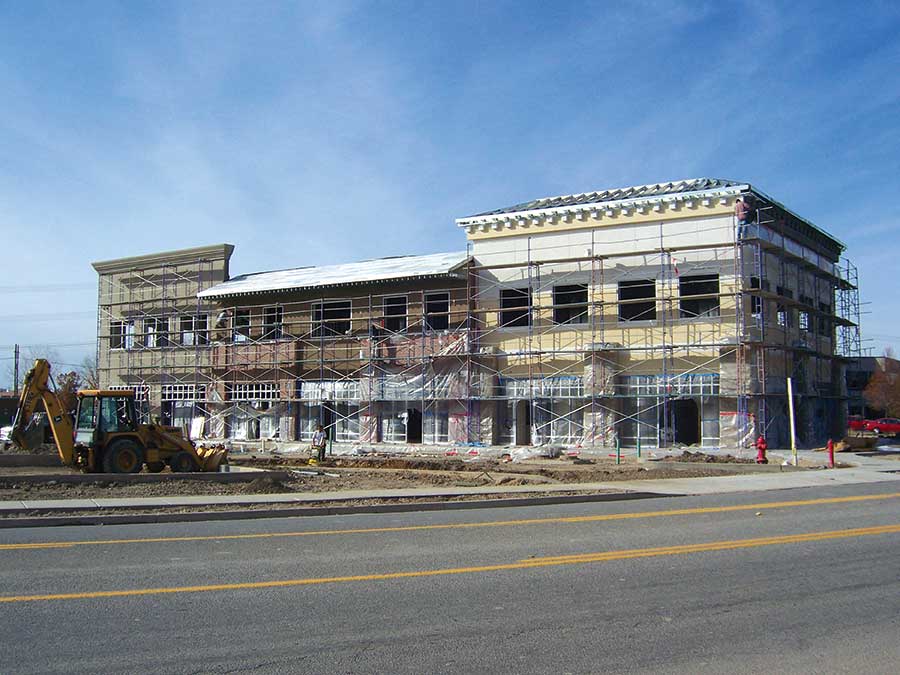
Evaluate your equipment needs. Commercial projects will use more scaffolding, bracing, and other equipment. Partner with another subcontractor and save money.
Evaluate Operations
Next, evaluate your present operations. You need to evaluate your current employees to be sure that they are capable of making the leap. Commercial construction requires much more attention to detail simply because of the paper flow and communication requirements.
Not every good residential foreman or superintendent can make the switch to a commercial project manager. On a residential job, they can get away with calling the builder and telling him that the job is going to be a week late because his buddy, the steel supplier, can’t get his lintel steel to the site for another week. On a commercial site, that doesn’t fly. There’s no excuse. Find another supplier, negotiate a deal and keep rolling.
Make sure your current personnel as well as your immediate future needs are met.
Evaluate your equipment as well. A commercial ICF project will require a minimum of 150 sets of bracing and alignment systems. You will likely have to invest in a man lift at some point as well. Better yet, make arrangements to partner with another subcontractor on the project to rent one together. This will save you a lot of money.
Be aware, however, that it will eventually cause you a delay. It’s inevitable that you will need the equipment at some point when your partner is using it or vice versa. A good piece of material handling equipment will come in handy when you start building multiple stories. If you have to move forms and steel and bracing up three or more floors, you have lost any efficiencies you may have previously had.
Review your current license requirements with the state or states that you plan to work in. In the past few years, several states have changed the requirements for licensing subcontractors. There is almost always a city or county business license that is required to operate in that specific city or county.
Have lunch with your insurance carrier and make sure that you have adequate coverage for all your needs. Have him process a bond application to find out what your bond rate will be. In almost every instance you will be required on commercial construction projects to post either a bid bond or performance bond or both. Your bond rate could very easily be the difference between getting the project and not getting it.
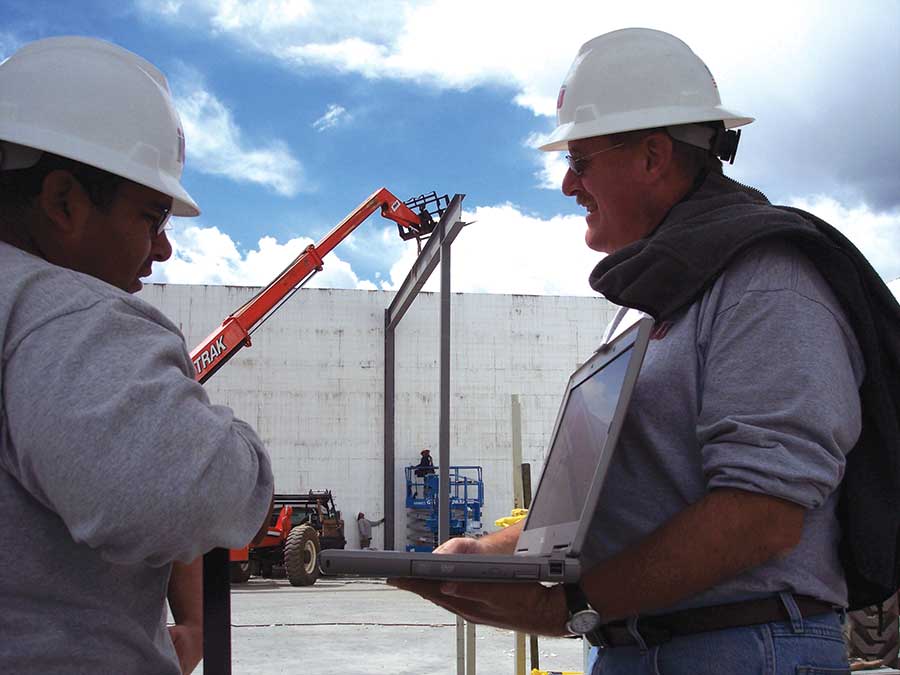
Computers are essential to prepare accurate estimates, invoices, job costing and project schedules. It will save countless hours and dollars.
Cash Flow
Perhaps the next step is one of the most crucial; make sure that you have adequate cash flow to carry the project
for a minimum of 60 days and preferably 90 days.
This is especially crucial at the beginning of a new project.
There will be mobilization expenses, material expenses, equipment rental expenses as well as personnel expenses and payroll taxes. You will be required to submit at the end of the first month an Application for Payment or a Pay Request. The contractor must then review it prior to approval, and pass it to the architect who then reviews and approves based upon compliance. It could very easily be 60 days for the first Application for Payment to be approved and payment rendered. Without adequate cash flow or access to a commercial line of credit, this could cause your small business to have big problems. There’s no magic number that determines adequate cash flow, but you need to be able to pay your bills and pay your employees for a minimum 60-90 days without straining the business.
OSHA Compliance
Review your safety plan for compliance with current OSHA requirements. If you don’t have a safety plan, create one immediately. There are all types and levels of software currently on the market to help create an OSHA-compliant safety plan. It should also provide all the forms needed to file claims etc.
Document, Document, Document!
Let me say that again. Document, Document, Document!
Is that clear enough? Good documentation will save you more money in the long run than perhaps any other administrative measure.
Use a Computer
Hopefully, everyone is operating on a computer. If you’re not running your business on a computer, put this article down and go straight to your nearest computer equipment store and buy a computer and purchase a basic training package with it. You can’t operate in today’s fast paced construction environment without one. You will need to prepare accurate estimates and accurate invoices. Even more importantly, you need to be able to do job costing so you will know whether you will be profitable or not before you get to the end and it’s too late.
A computer will save you countless hours and dollars. Design teams are increasingly posting drawings to the Internet or transferring drawings and Construction Documents in a PDF format. This can save travel time going to the print shop and with $5-a-gallon fuel we can all use a little help there.
A growing number of project meetings are conducted via video conference, saving dozens of hours in travel time and thousands of dollars in lodging and food expenses.
Conclusion
There are many other issues and planning strategies to consider when making that leap from residential construction to commercial construction. The key is to make sure that your construction team—no matter how large or small—will buy into your ideas for the business.
Include input from your key employees, and don’t hesitate to hire a consultant if you’re having trouble comprehending all that needs to be done.
Randy Wilkerson is a principal at Sustainable Building Strategies, LLC. For additional services or ideas on how to grow your commercial ICF business contact him at 865-567-8505.

